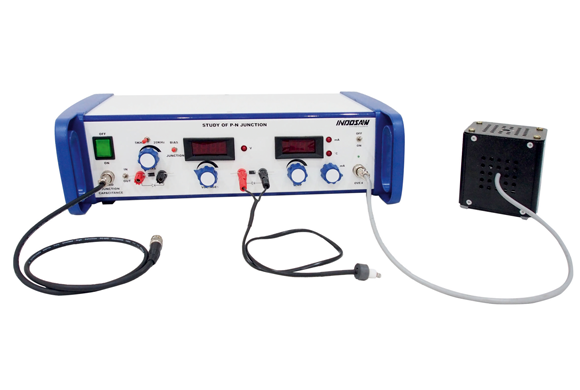
Principle and Working:
A semi-conductor always possesses an energy gap between its valence and conduction bands. For the conduction of electricity, a certain amount of energy is to be given to the electron so that it can jump from the valence band to the conduction band. The energy so needed is the measure of the energy gap (Eg) between the top and bottom of valence and conduction bands respectively.
The slope of V-T curve used to measure the temperature coefficient of the junction voltage and the energy band gap is given by
...
Vgo=V(T) - T.dV/dT - mƞkT/q
Where V(T) - Voltage at given temperature, dV/dT - Slope of curve, for Si, m = 1.5, ƞ=2 at 300K and for Ge, m = 2, ƞ=1 at 300K, ƞ - Material constant and q - charge of electron = 1.6 x 10-19C